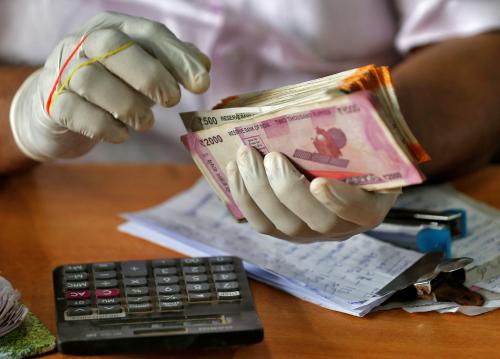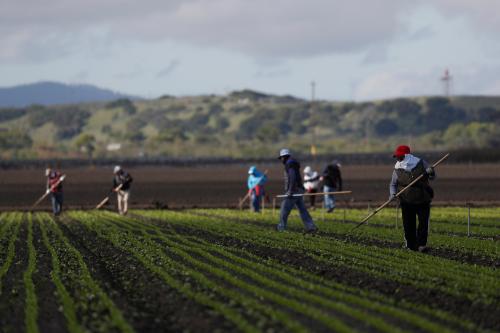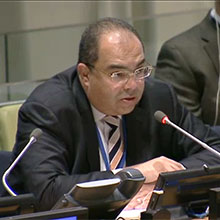In 2019, remittances reached a record high of $554 billion, overtaking foreign direct investment (FDI) flows to low- and middle-income countries (LMICs). Remittances have been larger, and more stable, than FDI in India, oil exports in Mexico, and tourism in Egypt, Nepal, and Tunisia. In 2020, however, the economic crisis caused by COVID-19 pandemic is expected to lead to a 20 percent decline in migrant remittance flows to LMICs. The decline in remittance flows would be even sharper in poorer countries and fragile and conflict-affected countries. According to the World Bank, LMICs could suffer a decline of over $100 billion in remittance flows, on top of a projected decline of $200 billion (37 percent) in FDI flows in 2020. The overall decline in external financing, especially with the significant decline of portfolio investment, can cause hardships for nations in managing their external payment needs, for essential imports and foreign debt service. Risks of households falling back into poverty and food insecurity have risen—the World Bank estimates that 40 million to 60 million people may be pushed into extreme poverty.
Several nations—Switzerland and the United Kingdom, together with Ecuador, Egypt, El Salvador, Jamaica, Jordan, Mexico, Nigeria and Pakistan, Sierra Leone, Yemen, and Zimbabwe—and organizations—the Africa-Europe Diaspora Development Platform (ADEPT), the International Association of Money Transfer Networks, International Chamber of Commerce, International Organization for Migration, Migrant Forum Asia, U.N. Capital Development Fund, World Bank—have issued a call to action to “keep remittances flowing.” They have called on policymakers to declare remittance services as essential and facilitate the scaling up of digital remittance channels.
The U.N. Secretary-General and the prime ministers of Canada and Jamaica organized the High-Level Event on Financing for Development in the Era of COVID-19 and Beyond on May 28, where more than 50 heads of state discussed declining capital flows and remittances and critical development finance and debt management issues that impact billions of people. With a global economic crisis raging and public finances strained everywhere, finding financing solutions will not be easy—at a minimum, it will take creativity, innovation, and innovative partnerships with the private sector.
Building on our earlier work, the following are a few actionable measures to keep remittances and development financing flowing:
- A tax credit could be offered to remittance service providers equal to the reduction in fees paid by remittance senders and recipients. This has been done by Pakistan’s Remittance Initiative, launched in response to the global financial crisis in 2009. Conversely, imposition of taxes on remittances should be avoided by source and recipient countries.
- Increase market competition in the remittances industry. Many countries around the world have exclusive partnerships, which stifles market competition and imposes a de facto tax on remittance senders and recipients. We need to open partnerships among national post offices, banks, and money transfer operators. We should also encourage interoperability of remittance technologies to help increase scale and reduce costs.
- Use digital technologies and advance adequate and appropriate, risk-based know-your-client (KYC) requirements. That could help address “de-risking” practices by correspondent banks (intended to avoid rather than manage risks) that continue to affect access to bank accounts for money transfer businesses operating in smaller and poorer remittance corridors.
- Borrowers need innovation and credit enhancement during this time of extreme risk aversion, when even investment-grade-rated entities in emerging markets are facing difficulties in accessing international capital markets. Diasporas from many developing countries tend to have a more favorable perception of country risk than institutional investors. The savings of such diaspora members, especially those kept as low-interest bank deposits, can be mobilized via the issuance of diaspora bonds. Several countries have raised billions of dollars of financing through diaspora bonds. Recently, Nigeria raised $300 million via a diaspora bond.
- Using future flows, including remittance inflows, as collateral can facilitate bond issuances during a financial crisis. Following a sharp increase in borrowing costs in 2002, Brazil raised over $4 billion by issuing bonds backed by diversified payment rights. According to the World Bank, these bonds had a lower borrowing cost, saving of more than 700 basis points compared to Brazil’s sovereign bonds.
- Setting up a structured, international effort to improve the data on remittances is a medium-term priority. Since the publication of the IMF guidelines on remittance statistics in 2009, data on remittances have improved significantly. However, many source countries do not report data on outward remittance flows. Data on bilateral flows of remittances among countries and flows via various channels (such as banks, money service businesses, and informal channels) and instruments (such as cash-based or online transactions) are lacking. From the viewpoint of access to development financing, data on remittances are now a key consideration in the assessment of debt and financial sustainability of developing nations.
Implementing these measures in a piecemeal, ad hoc, and uncoordinated manner, however, would not make any significant impact on the flow of remittances and finances. For implementing these actionable measures and the broader calls to action mentioned above, it would be ideal to work within an effective, coherent policy and institutional framework. The framework should be designed to reduce remittance costs and increase the volume of remittance flows (both are included among the indicators for the Sustainable Development Goals). Beyond that, it should also support the broader international remittances agenda including innovation in the global remittances market and leverage remittances for improving consumer and business lending, micro-saving and micro-insurance, for improving country risk ratings and access to international capital markets through securitization and issuance of diaspora bonds.







Commentary
How to keep remittances flowing
June 11, 2020